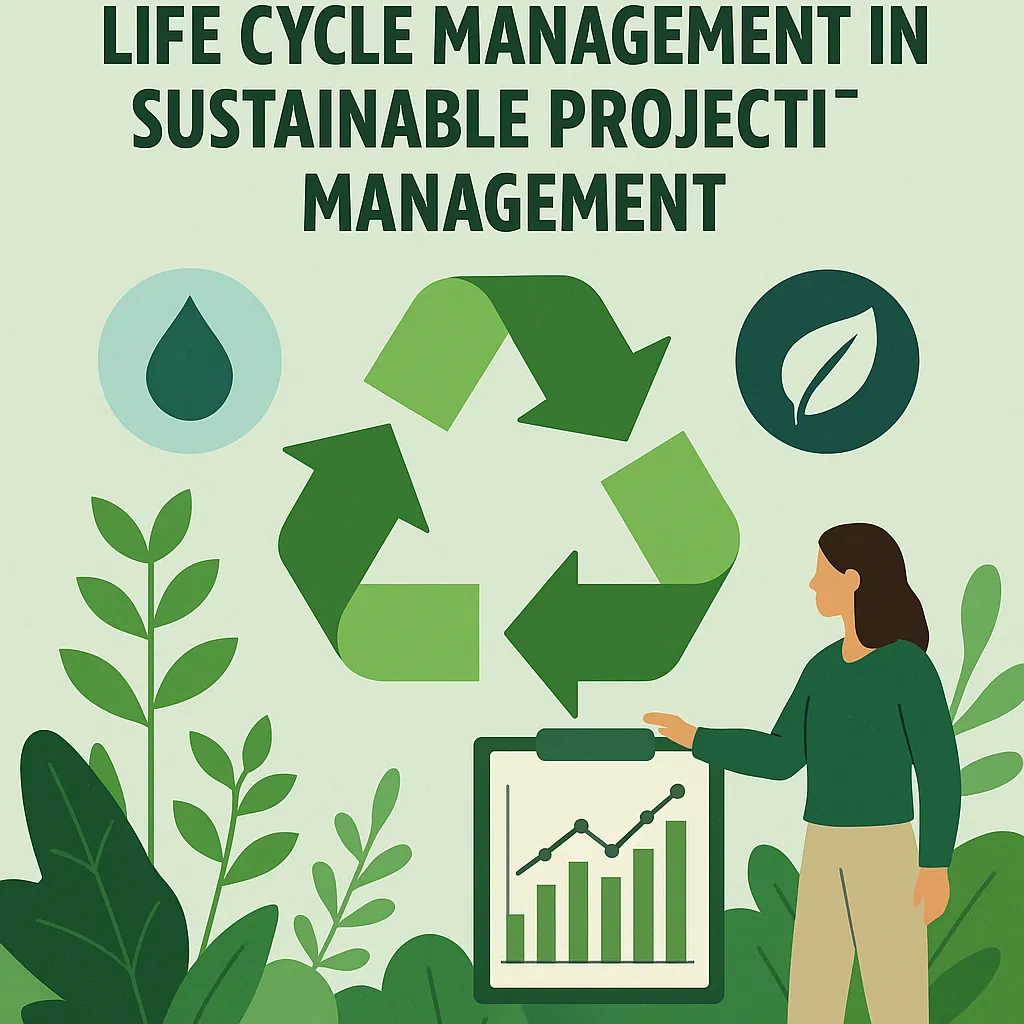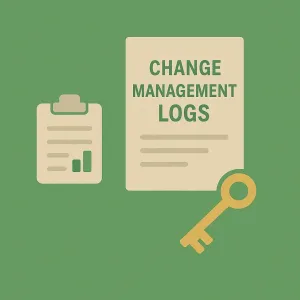Introduction to Life Cycle Management
Life cycle management (LCM) is a systematic approach that considers the entire lifespan of a project, from inception to completion and beyond. It encompasses the planning, execution, monitoring, and closure phases, ensuring that every stage is aligned with sustainability principles. This process is crucial for project managers and environmental consultants who aim to minimize negative environmental impacts while maximizing resource efficiency and stakeholder value.
Definition of Life Cycle Management Process
Life cycle management refers to the comprehensive approach of managing a project through its various stages, which typically include initiation, planning, execution, monitoring, and closure. Each phase is evaluated not only for its immediate outcomes but also for its long-term effects on the environment and society. By adopting LCM, project managers can ensure that sustainability is embedded in every aspect of the project, leading to more responsible decision-making and resource utilization.
Importance of Sustainability in Project Management
Sustainability in project management is increasingly recognized as a critical factor for success. The importance of integrating sustainable practices includes:
- Environmental Protection: Projects that prioritize sustainability help reduce waste, conserve resources, and minimize ecological footprints, contributing to the preservation of natural ecosystems.
- Regulatory Compliance: Many regions have stringent environmental regulations. Sustainable project management ensures compliance with these laws, reducing the risk of legal issues and penalties.
- Stakeholder Engagement: Modern stakeholders, including clients and communities, are more inclined to support projects that demonstrate a commitment to sustainability. This can enhance a project’s reputation and stakeholder relationships.
- Long-term Viability: Sustainable practices often lead to cost savings and efficiency improvements, ensuring that projects are not only viable in the short term but also sustainable in the long run.
Overview of the Integration of Sustainable Practices Throughout the Project Life Cycle
Integrating sustainable practices throughout the project life cycle involves several key strategies:
- Initiation Phase: During project conception, sustainability goals should be defined. This includes identifying potential environmental impacts and setting objectives that align with sustainable development principles.
- Planning Phase: In this stage, project managers can incorporate sustainability into the project plan by selecting eco-friendly materials, technologies, and processes. Risk assessments should also consider environmental factors.
- Execution Phase: Implementing sustainable practices during execution involves monitoring resource use, waste generation, and emissions. Engaging team members in sustainability initiatives can foster a culture of responsibility.
- Monitoring Phase: Continuous assessment of sustainability metrics is essential. This includes tracking progress against sustainability goals and making adjustments as necessary to improve outcomes.
- Closure Phase: At project completion, a thorough evaluation of sustainability performance should be conducted. Lessons learned can inform future projects and contribute to ongoing improvements in sustainable project management practices.
By embedding sustainability into the life cycle management process, project managers can not only enhance the environmental performance of their projects but also contribute to broader societal goals, ensuring that their work supports a sustainable future.
Understanding the Project Life Cycle
The project life cycle serves as a structured framework that guides projects from inception to completion. This cycle is crucial for ensuring that projects are executed efficiently and effectively, particularly when integrating sustainable practices. The project life cycle typically consists of five key phases: Initiation, Planning, Execution, Monitoring, and Closing. Each phase has specific objectives and deliverables, and understanding these can help project managers and environmental consultants incorporate sustainability into their projects.
1. Initiation
- Objectives: The primary goal of the initiation phase is to define the project at a high level. This includes identifying the project’s purpose, scope, and stakeholders.
- Deliverables: Key deliverables include the project charter and stakeholder analysis.
- Relevance to Sustainability: During this phase, sustainability considerations can be integrated by assessing the environmental impact of the project and identifying sustainable alternatives. This early focus on sustainability can help align project goals with environmental objectives, ensuring that sustainability is a core component from the outset.
2. Planning
- Objectives: The planning phase involves developing a detailed project plan that outlines how the project will be executed, monitored, and closed. This includes defining tasks, timelines, resources, and budgets.
- Deliverables: Deliverables include the project management plan, risk management plan, and sustainability plan.
- Relevance to Sustainability: In this phase, project managers can incorporate sustainable practices by setting specific sustainability goals, such as reducing waste, minimizing energy consumption, and using eco-friendly materials. A sustainability plan can outline strategies for achieving these goals, ensuring that sustainability is woven into the project’s fabric.
3. Execution
- Objectives: The execution phase is where the project plan is put into action. This involves coordinating people and resources, as well as managing stakeholder expectations.
- Deliverables: Key deliverables include project deliverables, performance reports, and change requests.
- Relevance to Sustainability: During execution, sustainable practices can be implemented through resource management, such as using renewable energy sources and ensuring that all team members are trained in sustainability practices. Regular communication about sustainability goals can also help keep the team focused on these objectives.
4. Monitoring
- Objectives: The monitoring phase involves tracking the project’s progress and performance to ensure that it stays on track and meets its objectives.
- Deliverables: Deliverables include performance reports, issue logs, and change management documentation.
- Relevance to Sustainability: Monitoring sustainability metrics is essential during this phase. Project managers should assess whether the project is meeting its sustainability goals and make adjustments as necessary. This could involve tracking resource usage, waste generation, and stakeholder feedback on sustainability efforts.
5. Closing
- Objectives: The closing phase marks the completion of the project. This involves finalizing all activities, obtaining stakeholder acceptance, and closing contracts.
- Deliverables: Key deliverables include the project closure report, lessons learned documentation, and final project deliverables.
- Relevance to Sustainability: In the closing phase, it is important to evaluate the project’s sustainability outcomes. This includes assessing whether the sustainability goals were met and documenting lessons learned for future projects. Sharing these insights can help improve sustainability practices in future projects and contribute to a culture of continuous improvement.
Integrating Sustainable Practices in the Initiation Phase
The initiation phase is crucial for laying the groundwork for environmentally responsible practices throughout the project life cycle. This phase not only sets the tone for the project but also establishes a framework for integrating sustainability into every aspect of the project. Here are key strategies that can be applied during this phase:
1. Identifying Stakeholders and Their Sustainability Expectations
- Engagement with Stakeholders: Early identification of stakeholders—including clients, community members, regulatory bodies, and environmental groups—is essential. Engaging these parties helps to understand their sustainability expectations and concerns, which can significantly influence project direction.
- Stakeholder Analysis: Conduct a thorough analysis to categorize stakeholders based on their influence and interest in sustainability issues. This can help prioritize engagement efforts and ensure that the most critical voices are heard during the project initiation.
2. Assessing Environmental Impacts and Sustainability Goals
- Environmental Impact Assessment (EIA): Implementing an EIA at the initiation stage allows project managers to identify potential environmental impacts associated with the project. This assessment should consider factors such as resource consumption, waste generation, and effects on local ecosystems.
- Setting Sustainability Goals: Based on the findings from the EIA, project teams should establish clear sustainability goals. These goals should align with broader environmental standards and regulations, as well as the specific expectations of stakeholders identified earlier.
3. Setting Sustainability Objectives as Part of the Project Charter
- Incorporating Sustainability into the Project Charter: The project charter serves as a foundational document that outlines the project’s objectives, scope, and stakeholders. Including sustainability objectives in this charter ensures that they are prioritized from the outset.
- SMART Objectives: Sustainability objectives should be Specific, Measurable, Achievable, Relevant, and Time-bound (SMART). For example, a project might aim to reduce carbon emissions by a certain percentage or achieve a specific certification (like LEED) by the project’s completion.
By integrating these sustainable practices during the initiation phase, project managers can create a strong foundation for environmentally responsible project execution. This proactive approach not only enhances the project’s sustainability profile but also fosters positive relationships with stakeholders, ultimately leading to more successful project outcomes.
Sustainable Planning Techniques
Incorporating sustainability into the project life cycle is essential for ensuring that projects not only meet their objectives but also contribute positively to the environment and society. Here are some effective methods for integrating sustainable practices during the project planning phase:
1. Creating a Sustainability-Focused Project Management Plan
- Define Sustainability Goals: Establish clear sustainability objectives that align with the overall project goals. This could include reducing carbon emissions, minimizing waste, or enhancing community engagement.
- Stakeholder Engagement: Involve stakeholders early in the planning process to gather insights and foster a sense of ownership. This includes engaging with local communities, environmental groups, and regulatory bodies to understand their concerns and expectations.
- Sustainability Metrics: Develop specific metrics to measure sustainability performance throughout the project. This could involve tracking energy consumption, waste generation, and resource use, allowing for adjustments as needed.
2. Incorporating Life Cycle Costing and Resource Efficiency
- Life Cycle Costing (LCC): Implement LCC to evaluate the total cost of ownership of project components, considering initial costs, operational costs, maintenance, and disposal. This approach helps identify cost-effective sustainable options that may have higher upfront costs but lower long-term expenses.
- Resource Efficiency: Focus on optimizing resource use by selecting materials and processes that minimize waste and energy consumption. This can include using recycled materials, adopting energy-efficient technologies, and implementing water conservation measures.
- Sustainable Procurement: Establish procurement policies that prioritize suppliers and materials with strong sustainability credentials. This not only supports sustainable practices but also encourages suppliers to adopt greener methods.
3. Developing a Risk Management Plan that Includes Environmental Risks
- Identify Environmental Risks: Conduct a thorough assessment to identify potential environmental risks associated with the project. This could include impacts on local ecosystems, pollution, and compliance with environmental regulations.
- Mitigation Strategies: Develop strategies to mitigate identified risks, such as implementing best practices for waste management, conducting regular environmental audits, and establishing contingency plans for potential environmental incidents.
- Continuous Monitoring and Review: Establish a framework for ongoing monitoring of environmental risks throughout the project life cycle. This ensures that any emerging risks are addressed promptly and that the project remains aligned with sustainability goals.
By integrating these sustainable planning techniques into the project management process, environmental consultants and project managers can significantly enhance the sustainability of their projects. This not only contributes to environmental preservation but also promotes social responsibility and economic viability, ultimately leading to more successful project outcomes.
Executing Sustainable Practices During Project Implementation
Integrating sustainability into the life cycle management process is essential for minimizing environmental impact and promoting long-term viability. This section discusses how project managers and environmental consultants can ensure that sustainability is maintained during project execution through various strategies.
1. Utilizing Sustainable Materials and Methods
- Selection of Eco-Friendly Materials: Choosing sustainable materials is crucial. This includes using recycled, renewable, or locally sourced materials that reduce the carbon footprint associated with transportation and production. For instance, opting for bamboo or reclaimed wood can significantly lower environmental impact compared to traditional materials.
- Adopting Green Construction Techniques: Implementing construction methods that minimize waste and energy consumption is vital. Techniques such as modular construction, which allows for prefabrication and reduces on-site waste, can be beneficial. Additionally, using energy-efficient machinery and tools can further enhance sustainability during the project execution phase.
2. Training Team Members on Sustainable Practices
- Workshops and Training Sessions: Providing training for team members on sustainable practices is essential for fostering a culture of sustainability within the project team. Workshops can cover topics such as waste management, energy conservation, and the importance of sustainability in project outcomes. This knowledge empowers team members to make informed decisions that align with sustainability goals.
- Creating a Sustainability Champion Role: Designating a sustainability champion within the project team can help maintain focus on sustainable practices. This individual can lead initiatives, monitor progress, and serve as a resource for team members seeking guidance on sustainability-related issues.
3. Monitoring Compliance with Sustainability Objectives
- Establishing Clear Sustainability Metrics: To ensure that sustainability objectives are met, it is important to establish clear metrics and benchmarks. These can include waste reduction targets, energy usage goals, and the percentage of sustainable materials used. Regularly reviewing these metrics allows project managers to assess progress and make necessary adjustments.
- Conducting Regular Audits and Assessments: Implementing a system for regular audits can help ensure compliance with sustainability objectives. These assessments can identify areas for improvement and ensure that the project remains aligned with its sustainability goals throughout the execution phase.
- Stakeholder Engagement: Engaging stakeholders, including local communities and environmental organizations, can provide valuable insights and feedback on sustainability practices. This collaboration can enhance transparency and accountability, ensuring that the project meets its sustainability commitments.
By integrating these sustainable practices into the project implementation phase, project managers and environmental consultants can significantly enhance the sustainability of their projects. This not only contributes to environmental preservation but also promotes a positive image and long-term success for the project and its stakeholders.
Monitoring and Controlling for Sustainability
The monitoring and controlling phase is crucial for ensuring that sustainability practices are effectively integrated throughout the project life cycle. This section emphasizes the importance of tracking sustainability metrics and adapting strategies based on performance data. Here are the key points to consider:
- Establishing Key Performance Indicators (KPIs) for Sustainability: Defining clear and measurable KPIs is essential for assessing the sustainability performance of a project. These indicators should align with the project’s sustainability goals and objectives, such as reducing carbon emissions, minimizing waste, and promoting resource efficiency. By establishing KPIs, project managers can create a framework for evaluating progress and making informed decisions throughout the project life cycle.
- Conducting Regular Reviews and Audits on Sustainability Practices: Regular reviews and audits are vital for ensuring that sustainability practices are being implemented effectively. These assessments should focus on compliance with established sustainability standards and the achievement of KPIs. By conducting these evaluations, project managers can identify areas for improvement, address any shortcomings, and reinforce best practices. This proactive approach not only enhances project outcomes but also fosters a culture of accountability and continuous improvement among project teams.
- Adapting Project Strategies Based on Sustainability Performance Data: The ability to adapt project strategies in response to sustainability performance data is a hallmark of effective project management. By analyzing the data collected through KPIs and audits, project managers can make informed decisions about resource allocation, process adjustments, and stakeholder engagement. This flexibility allows teams to pivot when necessary, ensuring that sustainability remains a priority throughout the project life cycle. For instance, if a particular strategy is not yielding the desired sustainability outcomes, project managers can explore alternative approaches or technologies that may be more effective.
Closing the Project with Sustainability in Mind
The project closure phase is a critical juncture where the integration of sustainability practices can significantly influence the overall impact of the project. This section outlines essential steps to ensure that sustainability considerations are effectively incorporated during the project closure.
1. Conducting a Sustainability Assessment of Project Outcomes
At the conclusion of a project, it is vital to conduct a thorough sustainability assessment to evaluate the environmental, social, and economic impacts of the project outcomes. This assessment should include:
- Evaluation of Environmental Impact: Analyze how the project has affected local ecosystems, resource consumption, and waste generation. This can involve measuring carbon footprints, energy usage, and water consumption.
- Social Implications: Assess the project’s effects on local communities, including job creation, community engagement, and social equity. Understanding these impacts helps in recognizing the project’s contribution to social sustainability.
- Economic Viability: Review the financial outcomes to ensure that the project has not only been environmentally and socially responsible but also economically viable. This includes analyzing cost savings from sustainable practices implemented during the project.
2. Documenting Lessons Learned Related to Sustainable Practices
The closure phase is an opportune time to document lessons learned, particularly those related to sustainable practices. This documentation should focus on:
- Successes and Challenges: Identify what sustainable practices were successful and which ones faced challenges. This can provide valuable insights for future projects.
- Best Practices: Highlight effective strategies and methodologies that contributed to sustainability. Sharing these best practices can foster a culture of sustainability within the organization and among stakeholders.
- Recommendations for Future Projects: Provide actionable recommendations based on the lessons learned. This can guide future project managers in integrating sustainability more effectively from the outset.
3. Communicating Results and Sustainability Impacts to Stakeholders
Effective communication of the project’s sustainability outcomes is crucial for transparency and accountability. This involves:
- Stakeholder Reports: Prepare comprehensive reports that detail the sustainability assessment findings, lessons learned, and overall project impacts. These reports should be tailored to the interests and concerns of different stakeholders, including clients, community members, and regulatory bodies.
- Engagement Activities: Organize meetings or workshops to present the results and engage stakeholders in discussions about the sustainability impacts. This not only fosters trust but also encourages collaborative efforts for future projects.
- Public Disclosure: Consider publishing the sustainability outcomes in public forums or sustainability reports. This enhances the organization’s reputation and demonstrates a commitment to sustainable practices.
By focusing on these key points during the project closure phase, project managers and environmental consultants can ensure that sustainability considerations are not only acknowledged but also integrated into the overall project life cycle. This approach not only enhances the project’s legacy but also contributes to broader environmental and social goals, paving the way for more sustainable practices in future projects.
Conclusion: The Future of Sustainable Project Management
The integration of sustainable practices throughout the life cycle of a project is not just a trend but a necessity for fostering environmental stewardship and social responsibility. As we have explored in this blog, the life cycle management process plays a pivotal role in ensuring that sustainability is woven into every phase of a project, from initiation to closure. Here are the key takeaways:
- Holistic Approach: Sustainable project management requires a comprehensive understanding of the environmental, social, and economic impacts of a project. By considering these factors at every stage, project managers can make informed decisions that benefit both the project and the planet.
- Stakeholder Engagement: Engaging stakeholders early and often is crucial. Their insights can help identify sustainable practices that align with project goals and community needs, fostering a sense of ownership and commitment to sustainability.
- Continuous Improvement: The life cycle management process encourages ongoing assessment and adaptation. By regularly evaluating sustainability practices, project managers can identify areas for improvement and innovate solutions that enhance project outcomes.
- Regulatory Compliance and Risk Management: Incorporating sustainability into the project life cycle helps ensure compliance with environmental regulations and reduces risks associated with environmental degradation. This proactive approach not only protects the environment but also safeguards the project from potential legal and financial repercussions.
As we look to the future, it is imperative for project managers and environmental consultants to embrace sustainability as a core principle of project management. This commitment not only enhances the quality and longevity of projects but also contributes to a healthier planet for future generations.
We encourage you to take action by implementing sustainable practices in your projects. Whether it’s through adopting green technologies, minimizing waste, or engaging with local communities, every effort counts. By prioritizing sustainability, you can lead the way in transforming project management into a force for positive change. Together, we can create a sustainable future, one project at a time.
Find out more about Shaun Stoltz https://www.shaunstoltz.com/about/.
This post was written by an AI and reviewed/edited by a human.



